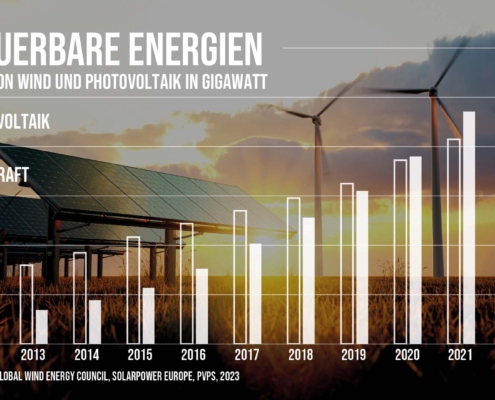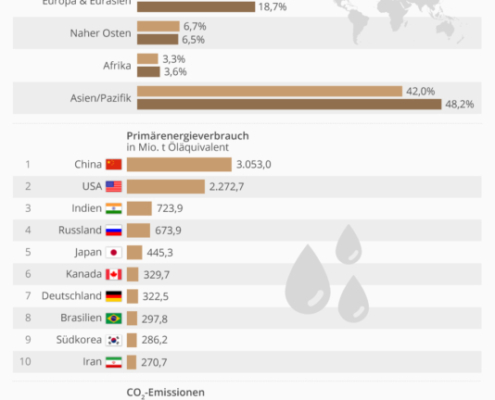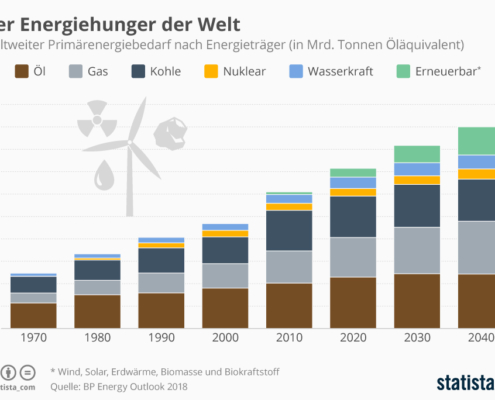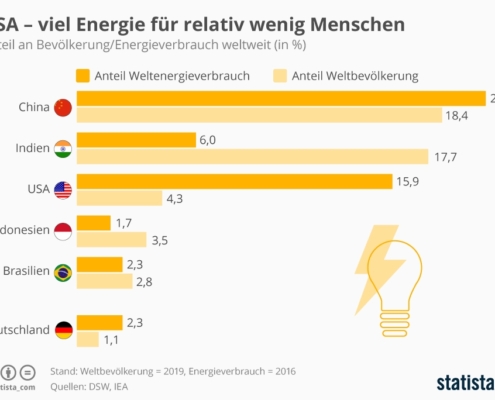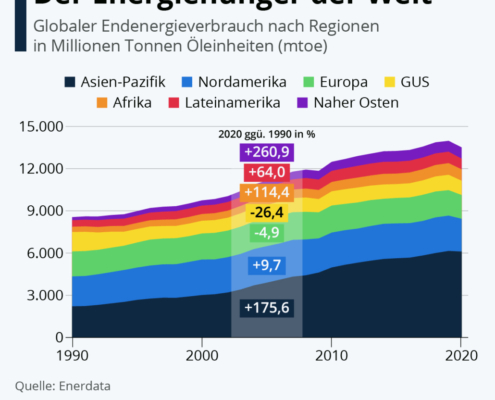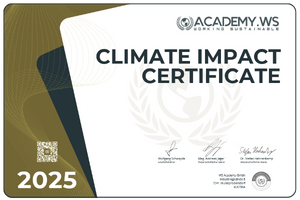Basics - Global energy demand
Global energy demand on the rise, fossil fuels continue to dominate
Listen to contribution - Global energy demand
Basics - Global energy demand
Global energy demand has increased exponentially in recent decades and represents one of the greatest challenges facing our society.
Energy is needed in many forms to meet our daily needs for electricity, heat and transportation. The sources and methods by which we generate energy have far-reaching impacts on the environment, climate change and socio-economic development.
- Global energy demand currently amounts to around 168,000 terawatt hours (TWh) per year. The current energy demand is expected to double by 2060. The largest shares will be accounted for by the electricity generation, heating and transportation sectors. Demand for energy will be driven primarily by populous countries such as China, the USA, India and other emerging economies, which are experiencing rapid economic growth. Over 50% of global energy growth is currently taking place in China, the world's largest consumer of electricity. India's energy demand, currently the third largest consumer, is also forecast to rise sharply. However, Qatar consumes the most energy per capita, with one Qatari consuming as much as 100 inhabitants of Kenya.
- The primary energy sources from which we obtain our energy are diverse. Fossil fuels such as coal, oil and natural gas still dominate the global energy mix, although their contribution to greenhouse gas emissions and climate change is significant. Fossil fuels remain dominant in the power, heat, and transportation sectors. In most countries, coal and oil are still used to heat buildings and power transportation. However, renewable energy sources such as solar, wind, hydro and biomass are becoming increasingly important and are helping to diversify the energy supply.
- The rising global demand for energy presents us with several challenges. First, high fossil fuel consumption increases greenhouse gas emissions and accelerates climate change. Second, many countries are dependent on fossil fuel imports, making their energy supply vulnerable to geopolitical tensions. Third, not everyone in the world is able to access a reliable and affordable energy supply.
- At the same time, the transition to cleaner and more sustainable energy systems opens up a wide range of opportunities. Renewable energies can help to reduce greenhouse gas emissions and reduce environmental pollution. The expansion of renewable energies also creates new jobs and promotes the local economy. In addition, decentralized energy production from renewable sources enables greater energy security and independence.
- Extensive measures are required to meet global energy demand sustainably. These include increasing energy efficiency, expanding renewable energies, promoting research and development in the energy sector and implementing political measures to reduce greenhouse gas emissions. International cooperation is also crucial in order to meet global energy needs in a fair and equitable manner.
Global energy demand is a complex and urgent issue. Demand for energy is expected to continue to rise, while at the same time measures must be taken to reduce the impact on the environment and climate change. Transitioning to cleaner and more sustainable energy systems is critical to ensuring a secure and affordable energy supply for all the world's people. It will require extensive collaboration at the national and international levels to address these challenges and seize the opportunities that a sustainable energy future presents.
Test knowledge now!
pro.earth News
The 10 most climate-friendly cities in the world - urban climate protection in practice
The 10 most climate-friendly cities in the world - urban climate protection in practice
Help
All modules consist of lessons, which can be worked through in any order.
A lesson basically consists of:
- Video
- Teaching content
- Information graphics
- eBook
- Exercise
- Final test
Each of the lessons includes an exercise at the end of the lesson. Here you can consolidate the knowledge you have learned by answering questions. If the exercise is completed positively, the learning progress is noted in your profile in the respective module.
Furthermore, the modules offer:
- Lessons with combined teaching content and exercises
- All videos under the menu item "Videos
- Listing of all information graphics under "Statistics
- eBook with teaching content
- Final test of the module under "Test
In order to positively complete the respective module, all exercises and the final test must be successfully completed. Afterwards, a certificate for the respective module will be activated in your profile.
After positive completion of all modules you are an ACADEMY.WS graduate and receive a corresponding certification.

